What is traumatic shock: first aid, causes and symptoms
Content
- Types of shock
- Haemorrhagic shock (hypovolaemic)
- Traumatic shock
- Septic shock
- Cardiogenic shock
- Anaphylactic shock
- Causes of traumatic shock
- Symptoms of traumatic shock
- Stages of traumatic shock
- First aid and diagnosis of traumatic shock
- Conclusion
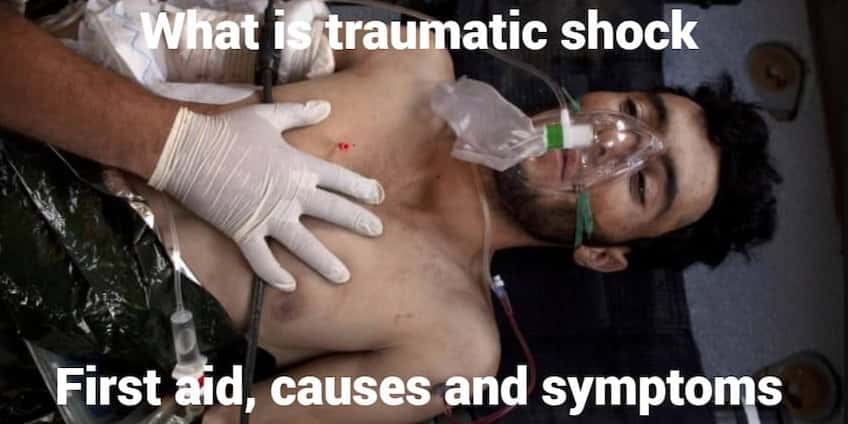
Traumatic shock is a dangerous condition that occurs due to severe, life-threatening injuries to the body. It can be caused by fractures, wounds or significant blood loss, which leads to malfunctioning of vital organs.
The body responds to trauma with a defensive response, but this is often accompanied by a lack of oxygen in the tissues (hypoxia). This can affect the heart, lungs and brain.
There are different types of traumatic shock, but they all have a common cause - a strong physical impact on the body. Timely assistance in this condition is crucial and can save lives.
Types of shock
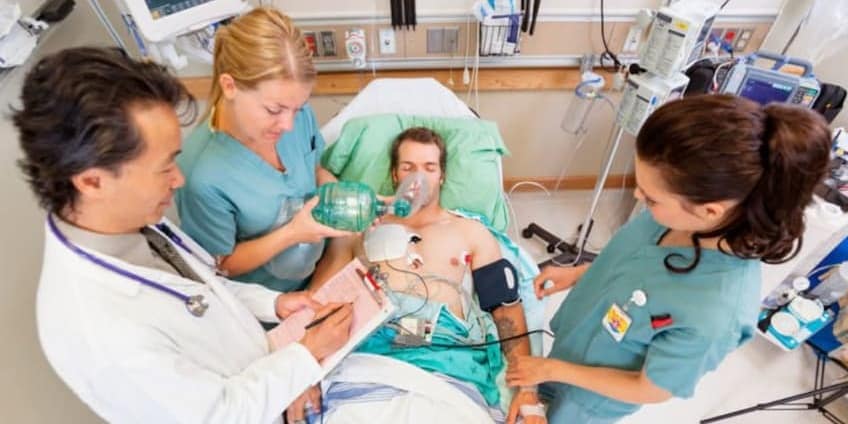
Traumatic shock can manifest itself in various forms, depending on the nature and extent of the injury. Understanding the types of this condition allows you to quickly assess the situation and choose the right first aid tactics.
Each type of shock has its own peculiarities of development and impact on the body, but they all have one thing in common - a serious threat to the victim's life. In this section, we will look at the main types of traumatic shock to help you better navigate critical situations.
Haemorrhagic shock (hypovolaemic)
Haemorrhagic shock is a critical condition of the body that occurs as a result of significant loss of blood or fluid. The main reason for the development of this condition is a decrease in the volume of circulating blood, which leads to a sharp drop in blood pressure and a lack of oxygen in the heart, brain and other organs. If not treated in time, this can lead to a shutdown of vital body systems.
The main causes and signs of haemorrhagic shock:
- Massive bleeding, both external and internal, caused by wounds, trauma or surgery. The loss of a large volume of blood in a short time can quickly lead to a critical condition.
- Severe burns and frostbite - significant tissue damage causes loss of plasma and other fluids, which reduces the volume of circulating blood.
- Intense diarrhoea and vomiting - excessive fluid loss due to gastrointestinal disorders leads to dehydration and decreased blood volume.
- Disturbance of consciousness - from excitement to depression or loss of consciousness due to insufficient oxygen supply to the brain.
- Weak or absent pulse in the extremities - due to a drop in pressure, peripheral vessels constrict, making it difficult to detect a pulse.
- Pale, cool skin - blood is drained to the internal organs, making the skin pale, damp and cold to the touch.
- Thirst - the body signals the need to replenish fluids through a strong feeling of thirst.
Timely first aid for haemorrhagic shock is critical. Stopping the bleeding with tourniquets and bandages can save lives and stabilise the victim's condition until the arrival of medics.
Traumatic shock
Traumatic shock is a severe pathological condition that develops as a result of serious mechanical injuries, such as fractures, wounds or damage to internal organs. This condition is the body's response to excessive pain and significant blood loss, which leads to critical disruption of vital organs and systems.
Traumatic shock is based on a sharp decrease in blood circulation, which causes a lack of oxygen and nutrients in the tissues. As a result, the body begins to redistribute blood in an attempt to maintain the normal functioning of the heart, lungs and brain, while reducing blood supply to the extremities and peripheral organs.
This leads to pallor, a decrease in skin temperature and a weakened pulse. In severe cases, traumatic shock can be accompanied by impaired consciousness, ranging from agitation to apathy or loss of consciousness.
This condition requires immediate intervention, as without timely assistance, multiorgan failure can develop, which can lead to death.
The main measures to help with traumatic shock are to stop bleeding, stabilise fractures and provide oxygen. Psychological support for the victim is also important, as the emotional state can affect the further development of shock.
Understanding the mechanisms of traumatic shock and the ability to respond to it properly are key to preserving the lives and health of victims in critical situations.
Septic shock
Septic shock is a severe condition that occurs as a result of a powerful infection caused by bacteria or viruses. As the infection develops, it spreads throughout the body, causing a massive inflammatory response and disruption of internal organs.
This type of shock is difficult to treat, especially in the later stages when the body is already in a critical condition. In cases of severe septic shock, disseminated intravascular coagulation (DIC) is often observed, which leads to blood clots and haemorrhages, complicating the patient's condition.
Despite the development of modern medicine, the use of anti-endotoxin drugs and anti-cytokine drugs to neutralise the inflammatory process has not yielded the expected results in saving lives in septic shock. The treatment of this condition remains complex and requires intensive care, including the administration of antibiotics, support for organ function and stabilisation of haemodynamics.
Timely diagnosis and rapid response by medical staff are critical to increasing the chances of survival for patients with septic shock.
Cardiogenic shock
Cardiogenic shock is a critical condition that occurs as a result of a sharp decrease in the pumping function of the heart. In this condition, the heart is unable to pump enough blood to provide oxygen to vital organs and tissues.
The main cause of cardiogenic shock is most often myocardial infarction, but it can also be caused by arrhythmias, myocarditis, or cardiac tamponade.
The development of cardiogenic shock is accompanied by a significant drop in blood pressure, which leads to insufficient blood supply to the brain, lungs and other organs. Patients usually experience severe shortness of breath, chest pain, pale skin, and cold sweats. There is often a disturbance in consciousness that can progress to coma.
Cardiogenic shock requires immediate medical attention, as it progresses rapidly without appropriate intervention and can be fatal. The main treatment measures include stabilisation of haemodynamics, use of medications to maintain blood pressure, administration of vasopressors and emergency cardiac procedures such as angioplasty or bypass surgery.
The effectiveness of treatment largely depends on the speed of diagnosis and initiation of therapy. Cardiogenic shock remains one of the most serious complications of cardiovascular disease, requiring a comprehensive approach and the participation of a multidisciplinary team of doctors.
Anaphylactic shock
Anaphylactic shock is an acute and life-threatening reaction of the body to an allergen, which leads to a rapid drop in blood pressure and disruption of internal organs. This condition is the most severe form of an allergic reaction that can develop within minutes of exposure to an allergen.
Anaphylactic shock can be caused by insect bites, medicines, food or chemicals. In response to the allergen, the body releases large amounts of histamine and other inflammatory mediators, which causes vasodilation, tissue swelling, and airway obstruction.
Symptoms of anaphylactic shock include sudden weakness, dizziness, difficulty breathing, swelling of the face and throat, rash, and loss of consciousness. If not treated immediately, this condition can be fatal.
Treatment of anaphylactic shock involves the urgent administration of epinephrine, which allows you to quickly constrict blood vessels, restore blood pressure and relieve swelling. Antihistamines, corticosteroids and oxygen therapy may also be used. It is important to ensure that the patient is in a stable condition until medical professionals arrive.
Anaphylactic shock requires an immediate response and follow-up, as even after initial relief, a second reaction may develop within a few hours. Wearing an epinephrine auto-injector is mandatory for people at high risk of developing anaphylaxis.
Causes of traumatic shock
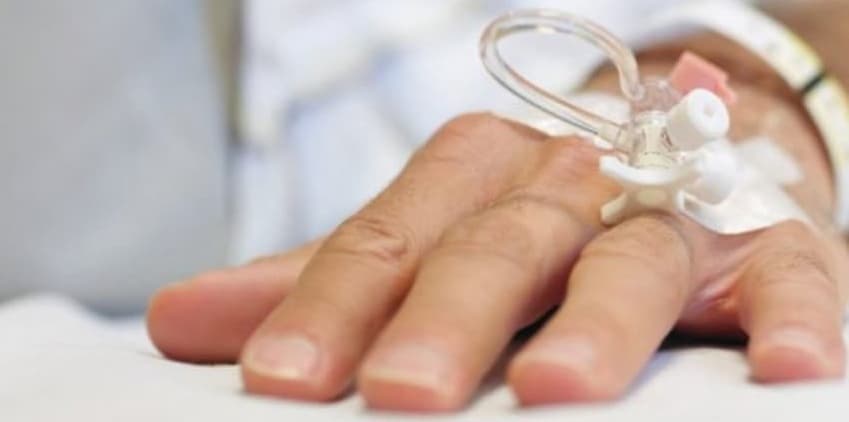
Traumatic shock occurs as a result of severe injuries to the body, most often accompanied by significant bleeding. The loss of large amounts of blood leads to disruption of vital organs, which is critical for the victim's survival.
However, bleeding is not the only cause of shock - this condition can occur even in injuries that are not accompanied by massive blood loss.
The risk of developing traumatic shock increases under the influence of additional factors, such as severe nervous shock, physical fatigue, hypothermia and a history of chronic diseases. These factors weaken the body, reducing its ability to respond effectively to trauma.
The main causes of traumatic shock include:
- Massive external or internal bleeding, which leads to hypovolaemic shock;
- Severe injuries, such as large bone fractures, craniocerebral injuries or internal injuries;
- Burns of large area and depth that cause significant plasma loss;
- Infectious processes and severe intoxication of the body, which can provoke septic shock;
- Exacerbation of cardiovascular diseases, in particular myocardial infarction, which sometimes causes cardiogenic shock;
- Allergic reactions that can cause anaphylactic shock.
Most often, the cause of traumatic shock is a large blood loss, which leads to the development of haemorrhagic (hypovolaemic) shock. Prompt medical care aimed at stopping the bleeding and stabilising the victim's condition is a key factor in the fight against traumatic shock.
Symptoms of traumatic shock
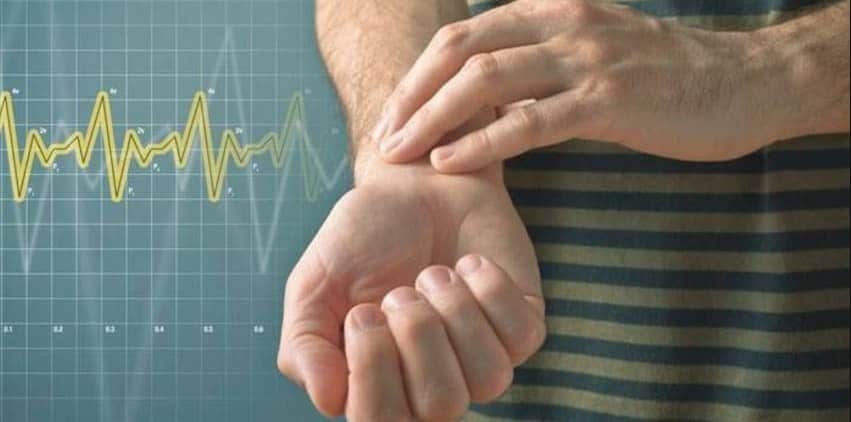
Traumatic shock is accompanied by a range of physical and emotional symptoms that develop as a result of serious tissue damage, such as fractures, burns or internal injuries. These manifestations are a signal of a critical condition of the body and require an immediate response.
In the early stages, the victim may experience psychomotor agitation, which is manifested by feelings of numbness, anxiety and disorientation. However, these symptoms quickly give way to physical disorders that become more pronounced with the severity of the shock.
Typical physical signs of traumatic shock include dilated pupils, nausea, pale skin, cold clammy sweat, dizziness, and possible loss of consciousness. The cardiovascular system is also affected, with irregular heartbeats, decreased blood pressure and blood flow, which leads to impaired coordination of movements.
As the shock progresses, the symptoms intensify. In later stages, there may be a lack of consciousness, pulse and blood pressure. These manifestations indicate a critical condition that can be fatal without timely medical care.
Traumatic shock can develop immediately after the injury or in a few hours. In the absence of urgent measures, there is a high risk of multiorgan failure and the development of acute respiratory distress syndrome, which significantly reduces the chances of survival.
Stages of traumatic shock
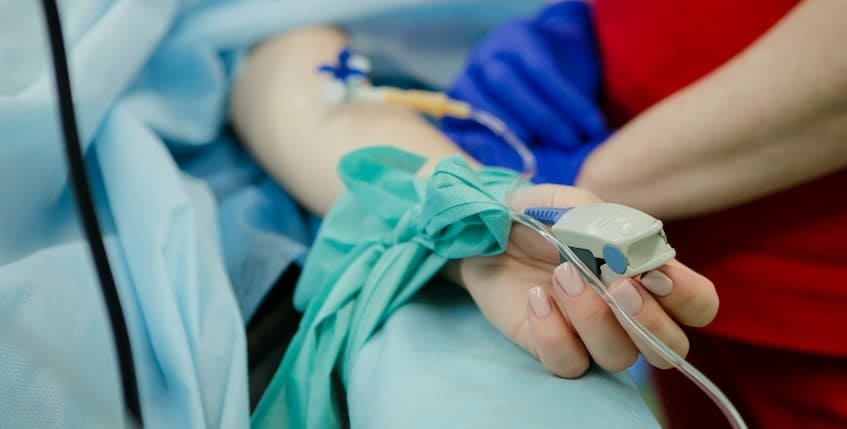
Traumatic shock goes through several stages depending on the severity of the injury, the amount of blood loss and the body's response to the injury. There are four main stages of shock: mild (I), moderate (II), severe (III) and terminal (IV).
The first stage (degree I, mild shock) occurs in isolated moderate injuries with a loss of up to 1000 ml of blood, which is approximately 20-30% of the circulating blood volume (CBV).
During this period, blood pressure fluctuates between 90-100 mmHg, pulse rate reaches 100-120 beats per minute, and respiration increases to 25 breaths per minute. The victim retains consciousness, but may experience mental retardation, weakness and pallor of the skin. The prognosis for this degree of shock is favourable if medical care is provided in a timely manner.
The second stage (stage II, moderate severity) is characterised by more severe blood loss - from 1000 to 1500 ml (30-40% of BCC). Blood pressure decreases to 70-90 mm Hg, heart rate reaches 120-140 beats per minute, and shallow breathing becomes more frequent - up to 30 breaths per minute.
There is pallor of the skin, cyanosis of the lips, mental and motor retardation. Although consciousness is preserved, orientation may be impaired. The prognosis for life at this stage remains doubtful and depends on the speed and quality of anti-shock measures.
The third stage (third degree, severe shock) occurs with massive blood loss exceeding 1500-2000 ml (>40% of BCC). This condition is accompanied by a critical drop in blood pressure below 70 mmHg, a heart rate of more than 140 beats per minute, and rapid, shallow breathing of up to 40 breaths per minute.
The skin becomes cold, pale, covered with sticky sweat, anuria (lack of urination), severe cyanosis and stupor or confusion are observed. This stage is extremely dangerous and has a poor prognosis without immediate intensive care.
The fourth stage (stage IV, pre-agony or agony) is the terminal phase of traumatic shock. In this state, consciousness is lost, the pulse in the peripheral arteries is not detected, blood pressure is critically low or not measured at all.
The pupils are dilated and unresponsive to light, the skin becomes cadaveric pallor and covered with cold sweat. Breathing becomes agonised, shallow or intermittent. In most cases, this stage ends in clinical death without urgent resuscitation.
Determining the stage of shock is important for assessing the victim's condition and choosing the right treatment tactics. The depth of shock is directly related to the amount of blood loss and blood pressure, making early diagnosis and prompt care crucial to saving lives.
First aid and diagnosis of traumatic shock
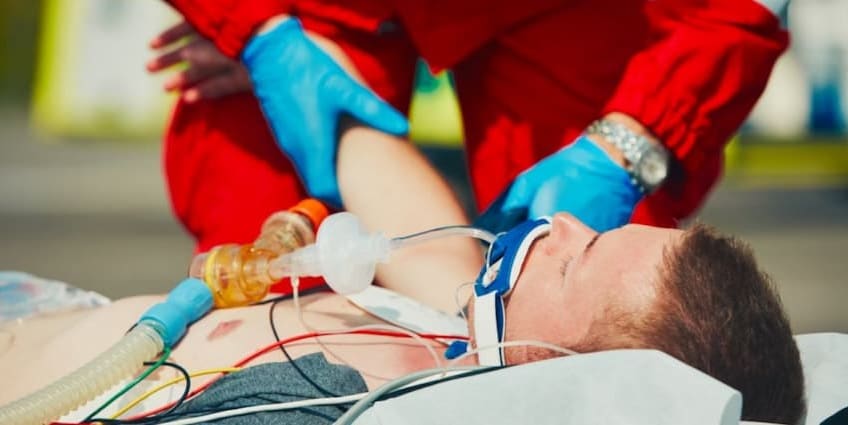
Diagnosing traumatic shock is the exclusive prerogative of medical professionals. A doctor conducts a comprehensive assessment of the victim's condition, analyses the symptoms and results of examinations, and then develops a treatment plan. The diagnostic process takes into account blood pressure, heart rate, level of consciousness and general condition of the patient.
First aid for traumatic shock is aimed at eliminating the factors that lead to further deterioration of the condition. Firstly, it is necessary to stop the bleeding, provide pain relief and apply a sterile dressing to the wound surface.
If fractures are present, they should be mobilised to prevent additional injuries. In case of respiratory distress, it is necessary to clean the oral cavity and nasopharynx, eliminate tongue protrusion and ensure airway patency. In severe cases, oxygen inhalation and administration of cardiovascular drugs are performed.
Evacuation of the victim to a medical facility is mandatory in cases of severe traumatic shock. In a hospital setting, infusion therapy is carried out to restore the volume of circulating blood, and resuscitation measures are taken. In the event of mass injuries and a large number of victims, medical triage is carried out, where first aid is provided to those who have been in shock for 1–2 hours.
In situations of significant blood loss, blood or plasma substitutes are transfused, and oxygen therapy is used in case of acute oxygen deprivation. The temperature in the room where the victim is located should be maintained at 20-24°C, and he or she should be warmed by covering with a blanket or thermal blanket.
First aid for suspected shock is provided as follows:
- Make sure there is no danger to you or the victim.
- Call an ambulance and follow the instructions of the dispatcher.
- Place the victim in a horizontal position and elevate the legs, unless breathing is impaired.
- Cover the victim to keep them warm.
- Maintain constant contact with the victim until the paramedics arrive, monitor his or her condition, and call the ambulance again if necessary.
Proper first aid and prompt hospitalisation are key to saving the victim's life and reducing the risk of complications.
Conclusion
Traumatic shock remains a serious threat, but modern methods of treatment and resuscitation can significantly increase the chances of recovery. It's important to remember that every second counts, and knowing the basic principles of first aid can save lives.
A quick response and competent first aid in critical situations can be crucial to saving the victim's life. It is important to be able to recognise the main symptoms and understand the severity of shock in order to act as effectively as possible before the arrival of medical personnel. Eliminating traumatic factors, stopping bleeding and stabilising the victim are the first steps in providing care.



